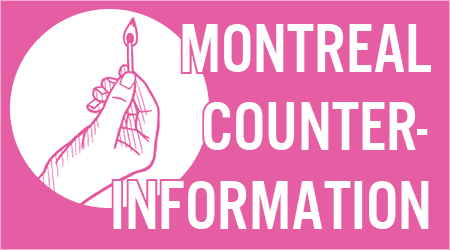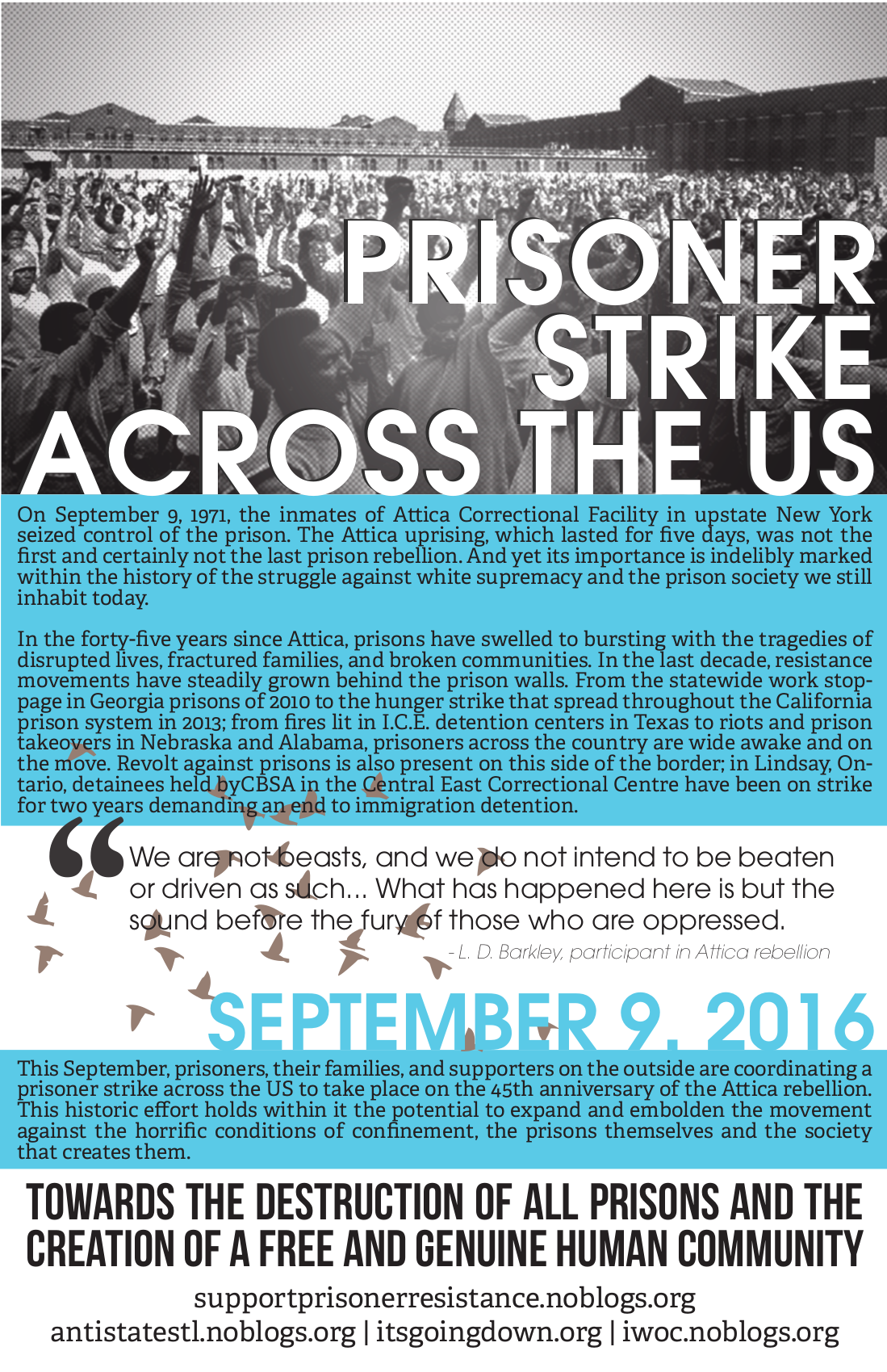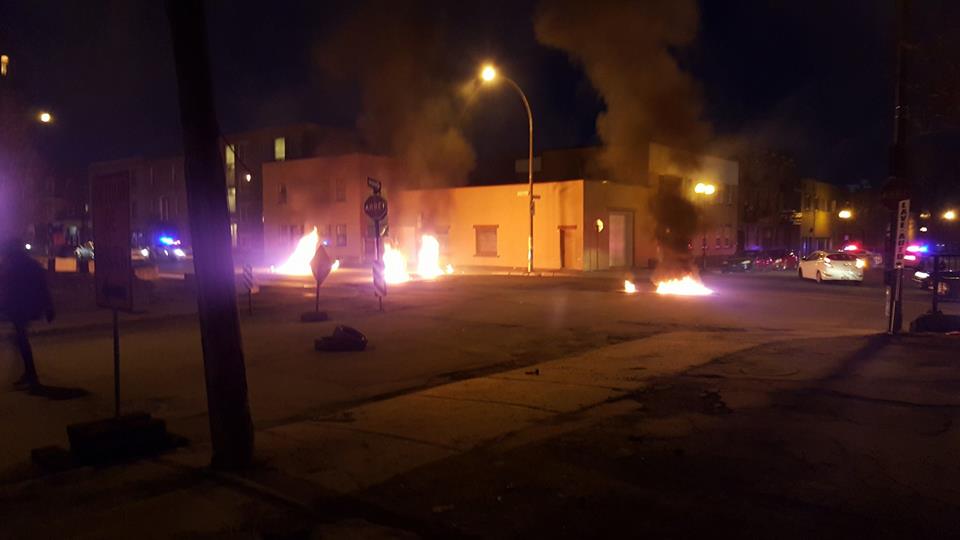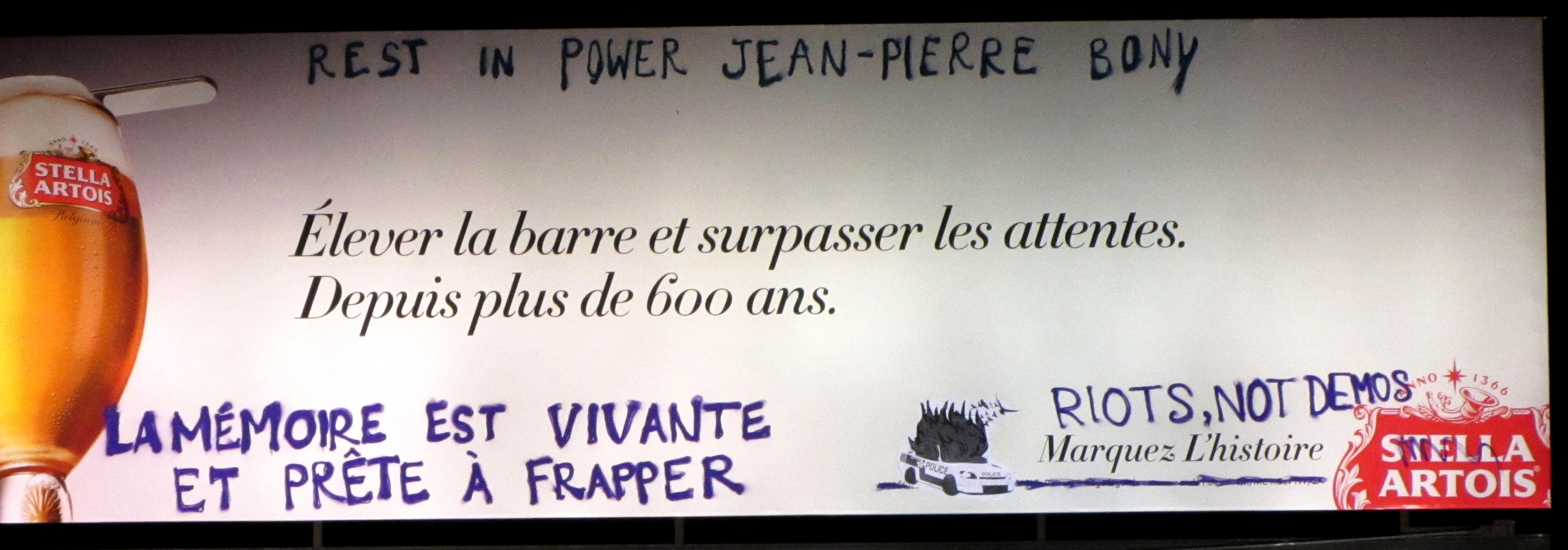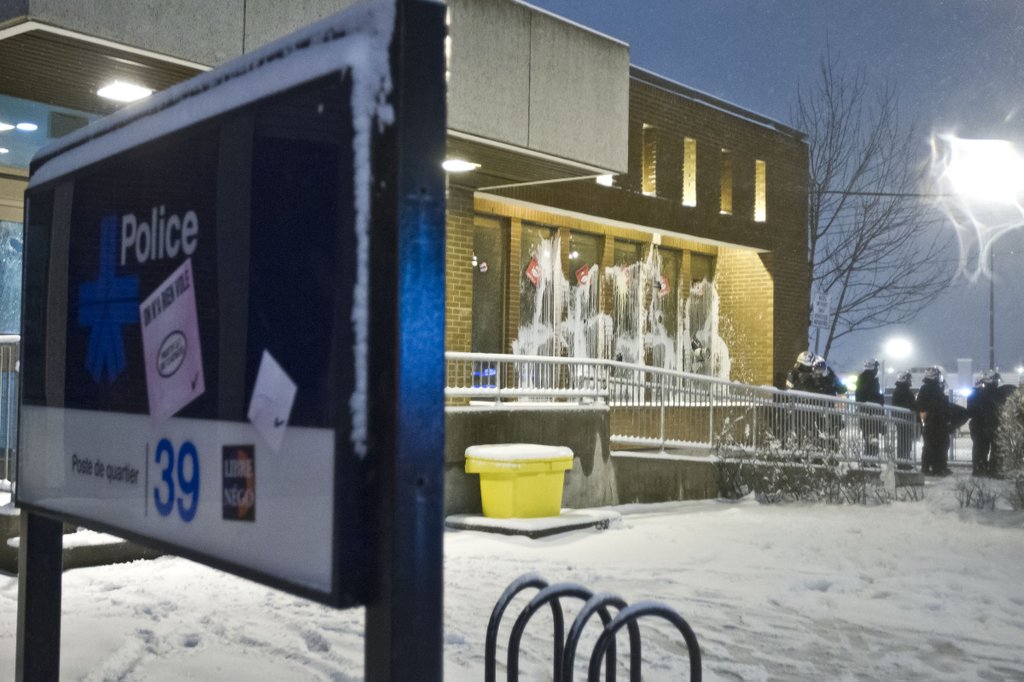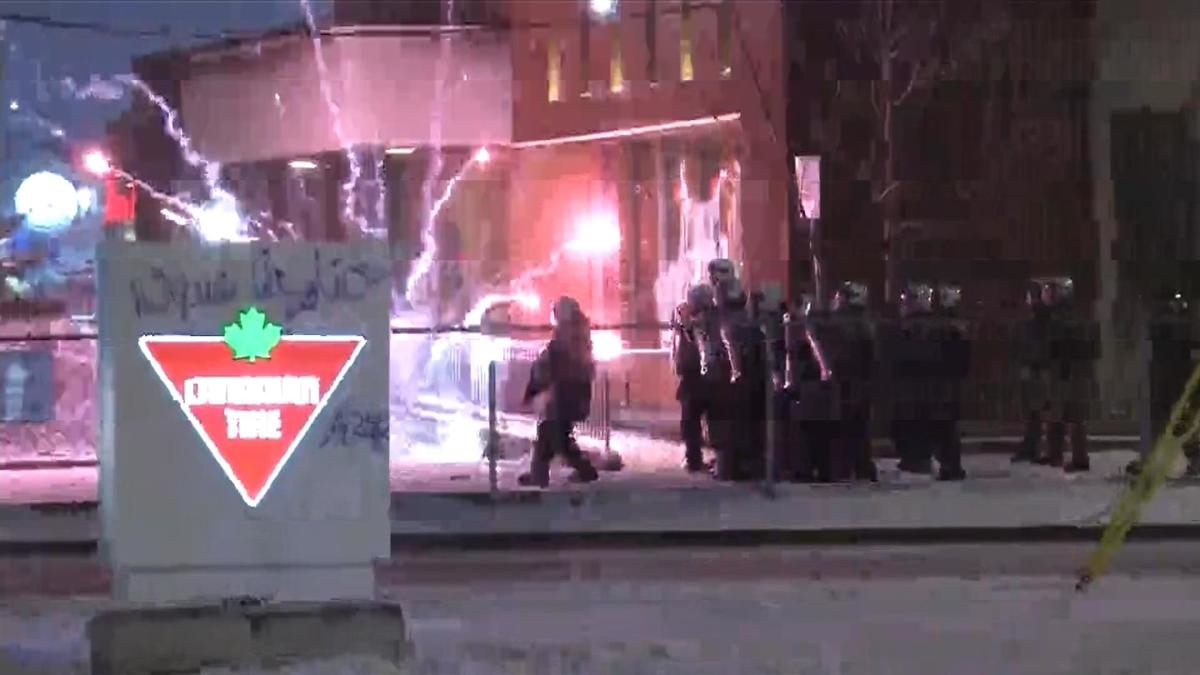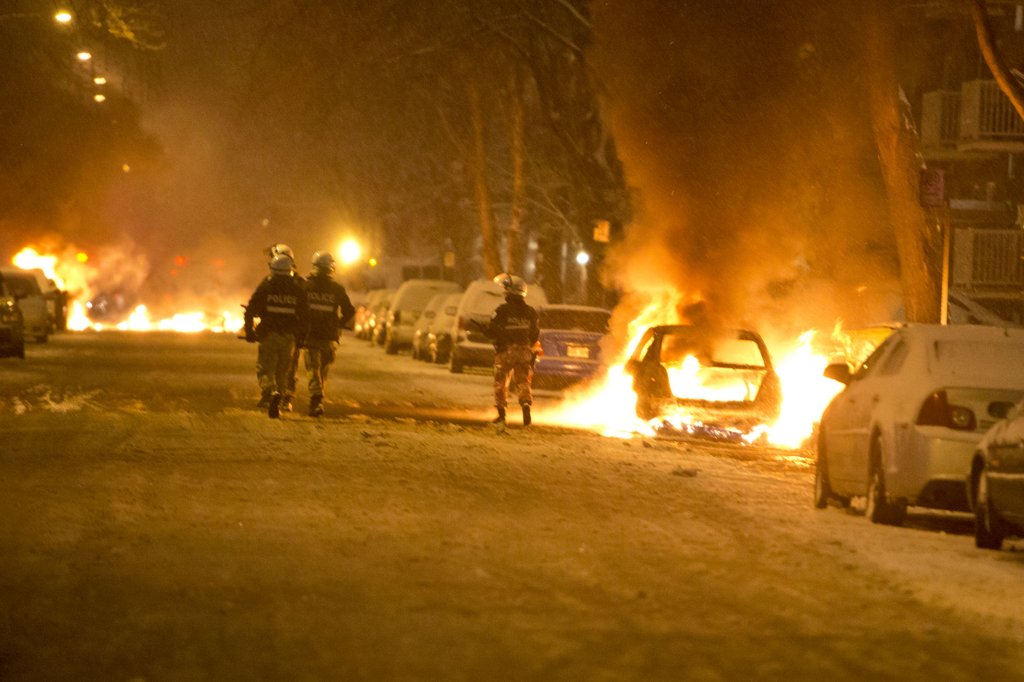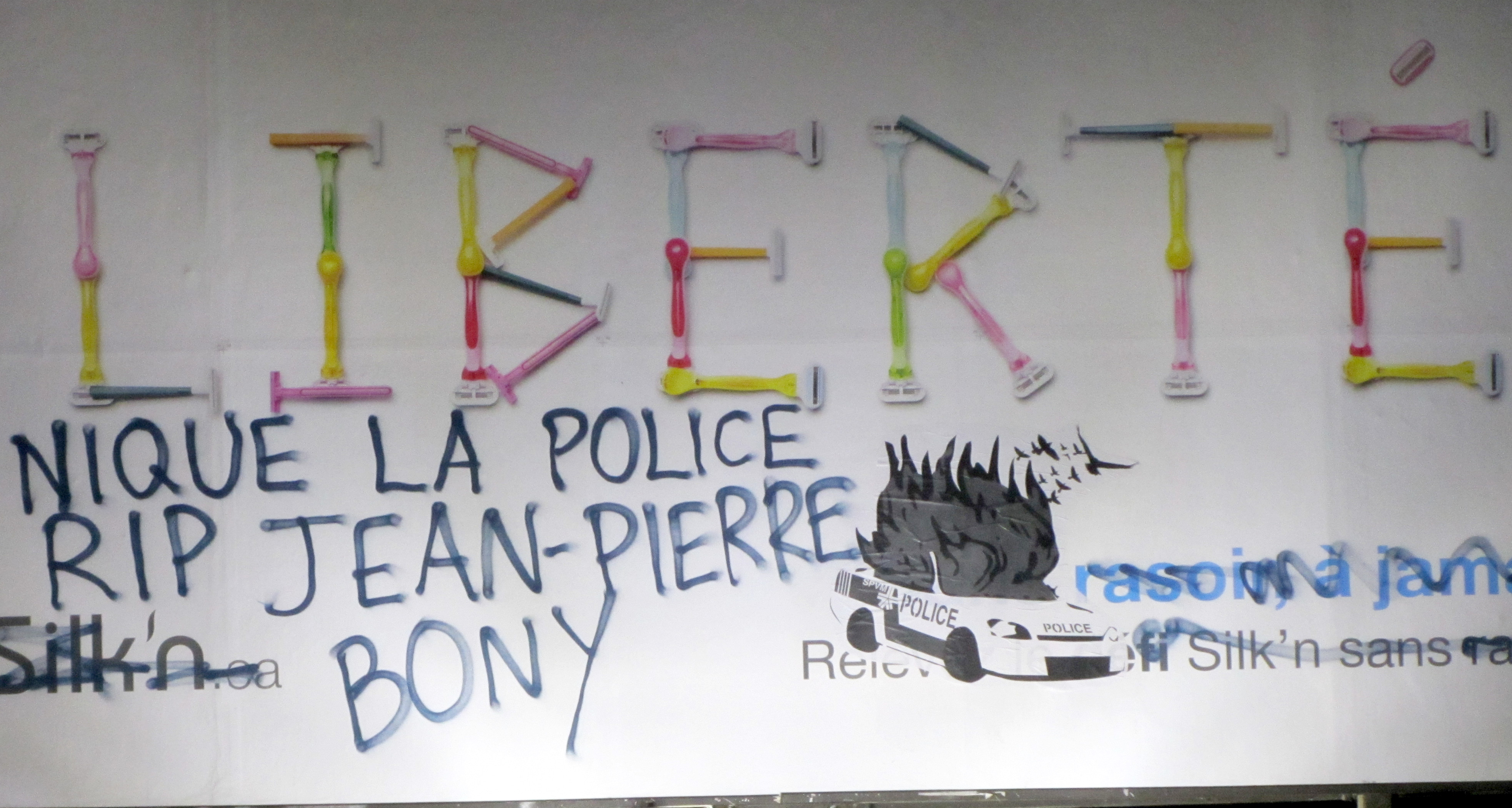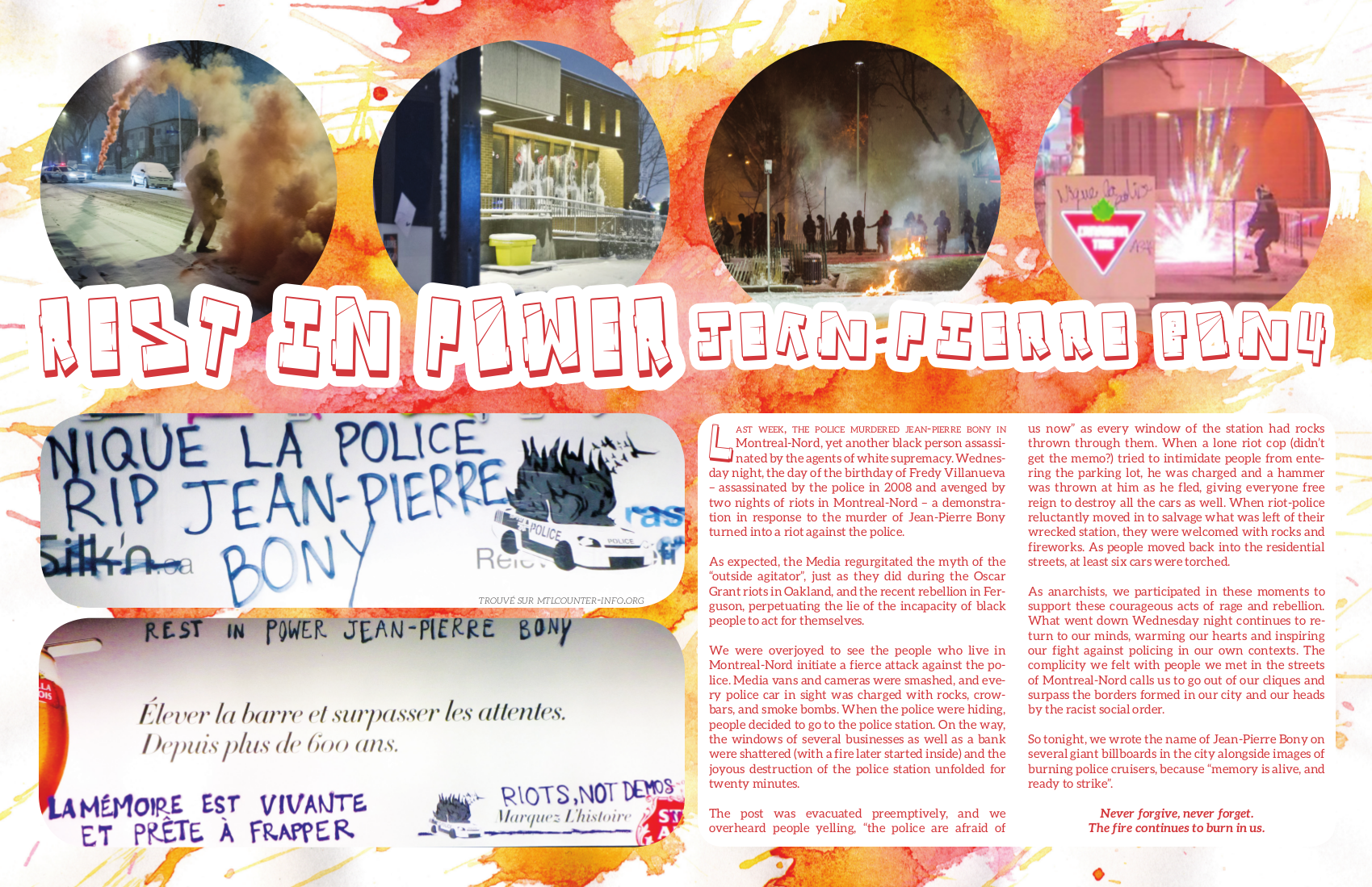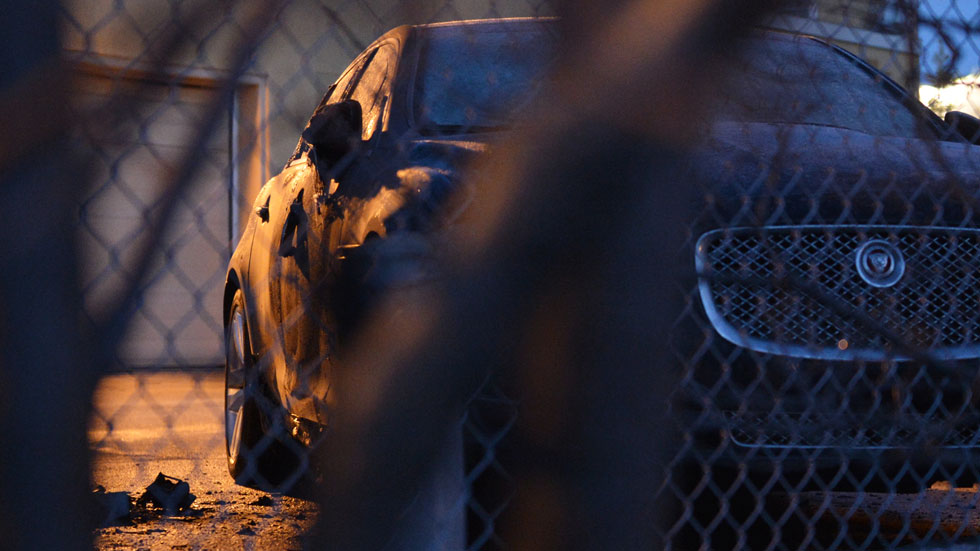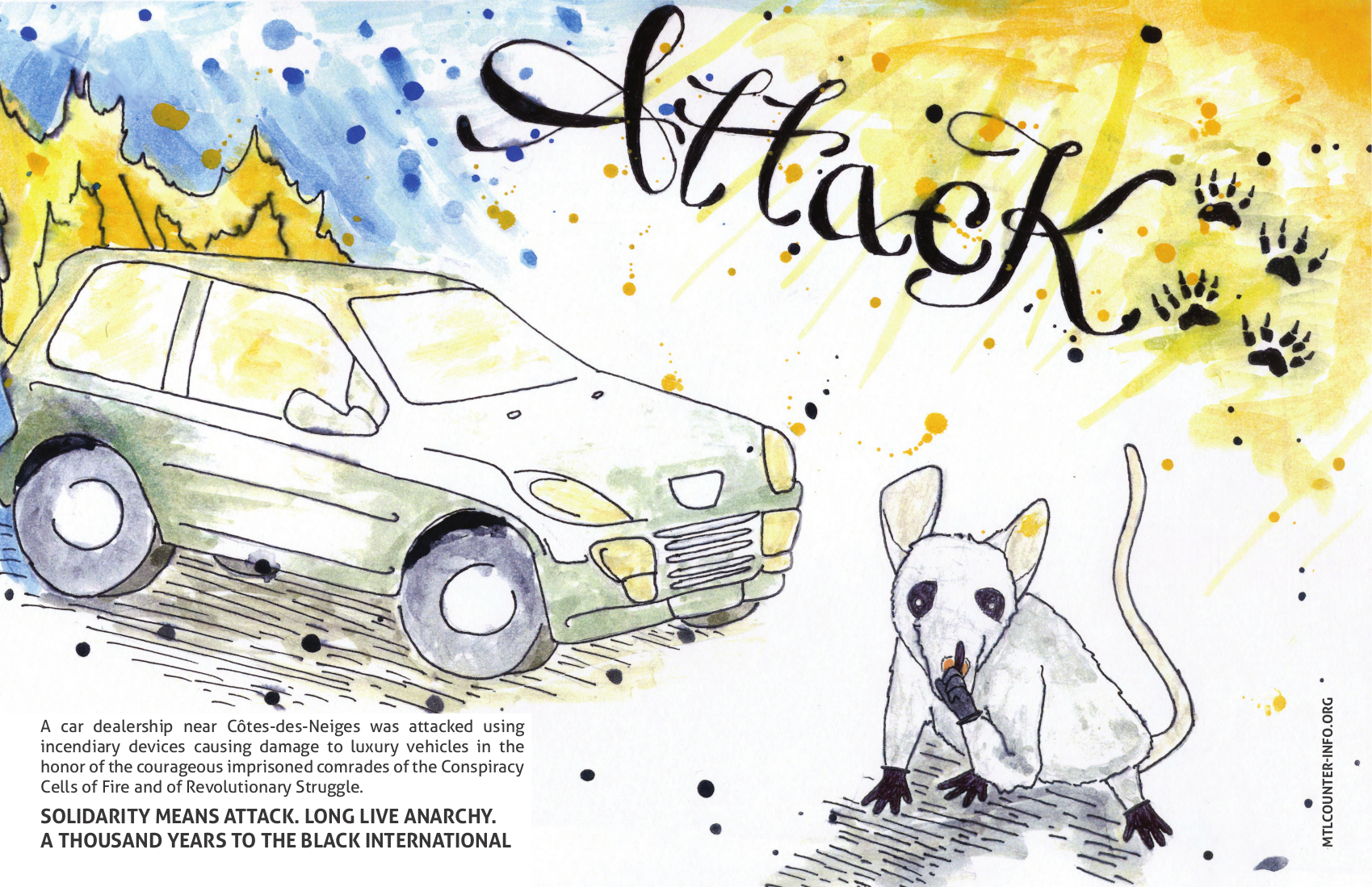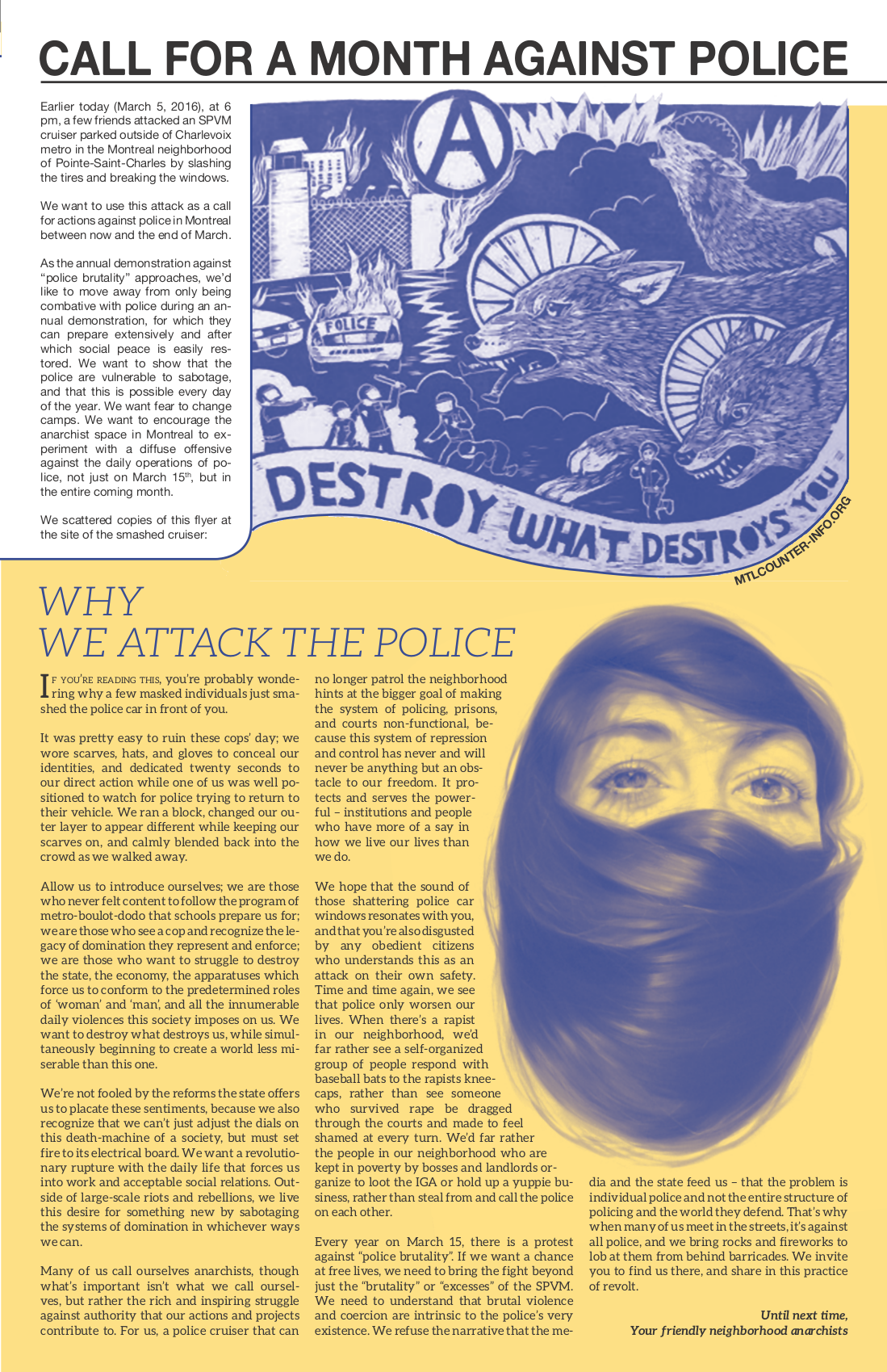On June 13, 2016 in Montreal, a judge sentenced me to 3 years of probation and 125 hours of community service for a memorable event that took place during the 2015 May Day in Montreal. I also have $600 of judicial fees to pay in 45 days. For this, I need your help. But in addition, I’ll offer you the delicious testimony of the cop who got beat while arresting me!
Your contribution can be deposited in the La Solide Solidarity fund Paypal account.
First, here’s an introduction of the facts. During the 2015 May Day demonstration, several among us were masked in black bloc. When the demonstration which left from Hochelaga reached downtown, we turned off towards the parking lot of the general headquarters of the SPVM to smash the cop cars parked there. Caught in a blatant crime, a large cop of 6 feet and four inches ran and jumped on me from behind to arrest me. The other comrades attempted to liberate me from his grip. Two other cops came to join him, and all three were violently attacked. The declaration from the first cop in the court document is hilarious, here’s an excerpt:
« (…) While I was still running in the direction of the cars that were being broken, other ”black bloc” joined this initial group of vandals. I fixated on a completely masked individual who was dressed in black who I saw break a window of a Laval cop car, and I didn’t let them out of my sight from then on. My decision was taken to physically subdue this person and proceed to their arrest (…)
When I reached this person who didn’t see me running at them, I firstly grabbed them by their backpack and I tried to bring them to the ground to subdue them. It was in trying to subdue them that I realized that this person is a woman, because I felt that she was less physically strong than me, and gradually, I saw that her outline corresponded to that of a woman’s. She tried to liberate herself and physically resisted her arrest by struggling and trying to flee. In just a few seconds, the black bloc demonstrators who accompanied her and who ran away with my arrival came back to help the accused liberate herself from my grip, as well as several others who came from the crowd. Some grabbed her by the hands to pull her towards them so that she could “slide” from my grasp, while the others attacked me in all the ways that they could. All those who I saw attacking me were completely masked and dressed in black.
I watched as these demonstrators try to smash my face with their six feet batons, tried to throw projectiles at my face with all their force just several feet from me. From this point, my goal was to protect my head and above all my face from serious injury. I particularly feared for my eyes due to not having any protective equipment and because the demonstrators tried to hit me in the face with the ends of their batons. However, I received several blows to the head and the back from the assailants who were behind me and whose blows I couldn`t see coming. With each blow I received, I saw a black thunderbolt pass in my vision. I know that I fell to the ground at one point, and I remember having avoided several blows that were directly aimed at my face by moving my face right to left, like a boxer.
Finally, after several seconds, other police in uniform came to my aid. The demonstrator who I held in arrest from the start was finally subdued by the officers in uniform and I. The police in uniform lowered the mask of the arrested demonstrator at this moment (…) When the police reinforcement arrived, all the black bloc demonstrators who assaulted me escaped and none were arrested. Several police came to see me immediately after the aggression and told me that there were at least twelve people encircling and hitting me. According to them, they threw projectiles at me, kicked me, and threw a fire extinguisher at my back (it was the blow that hurt me the most, but at the moment when I received it, I didn`t know what had hit me). I could see on my uniform traces of boots and soil, lots of pieces of a set of porcelain dishes, material that vandals and thieves use to easily break the windows of vehicles and hit in the inside corner of the window. I believe that these pieces were part of the projectiles I received, and there was also an extinguisher on the ground. (…)»
Finally, they nonetheless arrested me and accused me of armed assault, mischief over $5000 and disguise with the intention of committing a crime. I was let out on bail after a week at Tanguay prison, with a curfew of 11 pm.
In this account, I would like to emphasize the courage of the people who, rather than continuing to run and escape, showed themselves to be extremely solid and trustworthy comrades, in turning back to wildly attack the cop who arrested me.
More than a year passed, and on June 13, 2016, I was sentenced to mischief over $5000, obstructing arrest, disguise with the intention of committing a crime and carrying a weapon (porcelain); 3 years of probation, and 125 hours of community service. The judicial fees to pay in 45 days is $600! Your contribution would be appreciated.
Amélie


